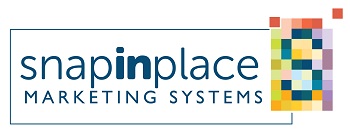Truth is generally the best vindication against slander. — Abraham Lincoln
 I can once again shout authoritatively TANSTAAFL!!
I can once again shout authoritatively TANSTAAFL!!
Over the years, during recessions and in times of plenty, I’ve deployed several on-premises marketing automation solution from Epiphany, Business Objects, Informatica, including a serious proof-of-concept with Microsoft CRM Dynamics.
Likewise I’ve launched low-end Software-as-a-Service (SaaS) solutions like Intuit’s Quickbase and high-end hosted services like Blue Roads for Fortune 500 marketing departments. Moreover, I’ve even commissioned and managed the development of a custom-designed Software-as-a-Service solution called TRAC.
It is a campaign management system for companies interested in using a prototype to test user resistance to process change prior to adopting more expensive and sophisticated processes, such as those being promoted today by companies like Eloqua and Salesforce.com.
So I know of which I speak when I say, now that I’m in week 8 of a 12-week SaaS deployment project, that, yes, folks, There Ain’t No Such Thing As A Free Lunch! For years I’ve known that it takes people like me to get SaaS technologies to work. These are subscription service solutions that sponsors toss over the wall to connect with on-premise, legacy systems or with other SaaS solutions out in the cloud.
Regardless of whatever malarkey the hosting service sales rep might have told my sponsors, these tools are not simple plug and play projects for large, global enterprises. Seamless integration. Rapid data migration. Complementary business processes. It’s all fertilizer feed, unless you’re a start-up or a small business with no existing processes. And now Gartner agrees with me.
Vindication At Last!
As a marketing IT process strategist for large organizations my primary function is to ensure a technology-optimized and consistent operation for marketing. This optimization must be reflected both financially as well as operationally. So I agree that a big thing going for Software-as-a-Service today is that it is cheaper to deploy, because it does not require a large capital investment for licenses or a support infrastructure from the service subscriber.
That’s a terrific selling point during a global economic meltdown like the one we’re living through today. But for any Fortune 500 company with pre-existing, rules-driven marketing operation processes, a SaaS deployment can be a chimera for sustainable operational advantage, particularly during a protracted recession.
Why use hosting services under these conditions? It may be argued that the prospects for a SaaS solution developer, integration reseller or consultant are quite bright today. The low cost of data storage as a service in the cloud and growing broadband availability lend a hand to entrepreneurs in deploying more economical SaaS models that appeal to the OPEX rather than CAPEX side of their clients’ cost statements.
IT management has grown less resistant to outsourcing non-mission critical functions, especially to providers offering sound service level agreements for bonafide secure data hosting. Industry specialization and a healthy respect for best practices continue to improve application design. All this seems to paint a pretty picture for ROI. But how much are you really willing to give up today for all of this?
Gartner VP Robert Desisto reported that “The real time that goes into deploying enterprise apps is not so much in the technical aspect but in the other elements of developing the data model, work flows, business process and integration — and with that kind of stuff you’re not going to gain any advantage with SaaS.”
Data models? Work flows? Business process and integration? Sounds like a typical IT project to me. I thought this SaaS stuff was supposed to be easy!
According to Gartner, “as the complexity of the business process and integration increases, the gap between SaaS and on-premises software deployments narrows. That’s because a larger percentage of the deployment time is spent on customization, configuration and integration, which are equally difficult with both models.”
Data Models, Workflows and Process Integration Are Cultural
Two-thirds of the way into a Silverpop Engage B2B marketing database project, I’m in the midst of precisely that kind of reality. Legacy process mapping, data transformations and data migration, batch integration and synchronization are not the stuff that you’d expect to deal with when deploying a “turnkey solution”. But big business is complex. Fortune 1000 companies are at the top because they’re large. Complex processes keep these mammoths working.
Is recession a time to attempt process change? Absolutely. No time is better for process refinement as a means to achieve cost containment and greater productivity yield. But is your corporate culture willing to give up custom legacy functionality for out-of-the-box standard SaaS functionality with limited customization potential and a likely conventional system integration schedule? Will the “quick hit” scenario play out for you, if you’re attempting a “rip and replace” process modification through a spanking new SaaS offering?
Let’s look back at what Gartner said. The gap between on-premises solutions and Software-as-a-Service narrows when we look at data models, workflows and process integration. A data model is like the skeleton in your body. Lacking a model means lacking a backbone. If your system can stand up straight without one, it’s a spineless wonder. Workflows are like your body’s circulatory system. Any leaks mean trouble. Leak heavily in the wrong place and you’re dead. Process integration is like your nervous system, orchestrating the operation of every organ in your body.
Since when would you undertake major surgery to change your body without making sure that the surgical team knows what will happen to each of these components of your entire system, even if your health is on a serious decline and needs help fast? Why then would you treat your business corp any different by hiring a SaaS who can’t speak to you explicitly about data models, workflows and process integration in the context of your own corporate culture?
During your negotiations with the SaaS provider, you should find out how their system deployment plan will address these 3 areas as they relate to the health of your business’ culture. SaaS saves money, because there is no initial capital investment. It is faster to deploy, if your rollout is dull simple. But because nothing worth having comes to you for free, trust your intuition.
Be skeptical and question the provider about their plan to help you change your corporate culture to embrace the new data models, workflows and processes. If you get a blank stare in return, run for the hills! The recession will be over before you’re done mopping up the tragedy that such a deployment might cause you, if it doesn’t kill your operation first.
Return to Marketing Automation from Deploying SaaS In A Recession
